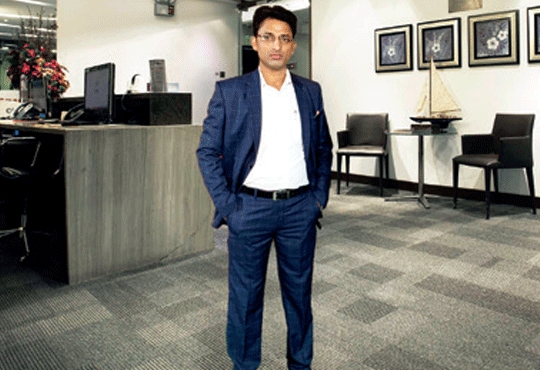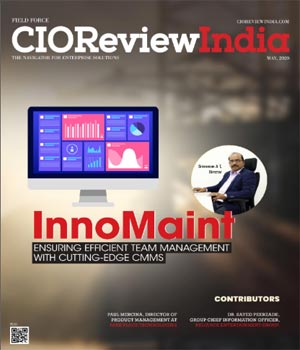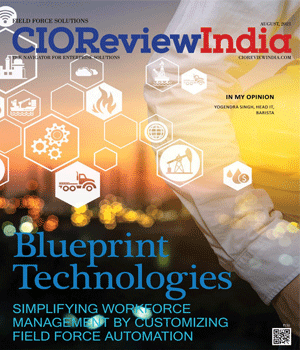
Optimizing productivity with Lean Management in Field force operations
Janifha Evangeline | Saturday, 02 July 2022, 12:08 IST

Although several enterprises have started to realize that they should improve the productivity of their field forces it is not an easy task to achieve. This is because there are various factors that should be in place. And, all the elements of the solution should work together in order to completely reap the benefits. However, the failure for taking a multi-faceted & well-coordinated approach to field-force management will not only lead to waste but also rise cost-to-serve.
“Bringing great simplicity and ease to the field activities and operations, such a solution empowers the field employees to carry out their duties efficiently and empowers the organization to closely monitor their field workforce for performance,” says Yogendra Singh, Head – IT/SAP, Barista Coffee Company Ltd.
“Adding enterprise mobility management to the equation is even better because any good field force mobility Solutions are having the potential to streamline the process of managing field force even further,” he adds.
Most often, the underlying reasons for the field force’s low productivity are completely visible & many field forces by not use fundamental approaches for ensuring efficiency & optimizing utilization and end up in inadequate performance management. Also, a reactive approach to dispatching, poor visibility into the technicians’ activities, and inaccurate forecasting are among the most common obstacles.
In order to address these challenges, most enterprises have turned to lean-management techniques and will be satisfied with implementing these techniques effectively. But, when we look deeper at the actual activities & culture, we observe that organizations actually struggle to do everything they need to do in an orchestrated way. They might possess the required metrics, but not act on them. They would hold weekly meetings with technicians and not communicate about the right topics beyond safety, or even request administrators to spend time in the field without guiding them on coaching technicians for promoting improvement.
However, thanks to the new digital tools as well as advanced analytics which has made it easier for plugging the value leakage which flows via the gaps in lean-management practices. Organizations could track the performances of the technicians in real-time, and make decisions on the go about improving productivity and at the same time accurately predicting job times by disaggregating a huge install/repair job into discrete tasks. Also, dispatchers can obtain live updates on a technician’s progress at the task level & intervene as required such as by connecting them with experts through AR or VR.
The five-phase lean journey
The following 5 step approach shows how enterprises can effectively implement lean in order to address these productivity dimensions and what can be achieved.
One of the companies in the North American region comprising a huge workforce of unionized as well as non-unionized labor had a focus on numerous integrated initiatives to improve productivity. Thereby the on-site productivity increased by 20% and customer satisfaction increased by 50%, while the number of repeat visits for servicing fell by 50%.
Phase 1: Establishing KPIs, metrics & roles
All of the performance measures have to be clearly explained as this would help people in the company to understand the objectives/goals that underlie their targets. Furthermore, the performance of the technicians can be measured in terms of the dimensions of availability, utilization, and efficiency.
Phase 2: Enhance the forecasting & capacity planning
Right-sizing of the business-as-usual workforce, accurate forecasting as well as flexible allocation of activities in response to demand are the main factors for effective planning management. And the modeling in this must cover multiple time horizons such as weekly, day minus 1, and on the day.
Phase 3: Transition to dynamic dispatching
Dynamic dispatching is where dispatchers adjust the allocation of field tasks, proactively. It is crucial for improving productivity & customer experience. A dynamic-dispatching model decreased idle time and improved on-time arrival, at the utility. It further improved coordination among the field technicians & dispatchers for reducing white space/ periods in which no work is allocated.
Phase 4: Promote continuous improvement
Organizations have to establish a systematic process for driving continuous improvement via the focused application of improvement tools & techniques. Though the concept of continuous improvement is known to everyone and not new, the implementation of data-driven, in-depth investigations will significantly decrease the business impact of equipment & operational failures. For instance, an enterprise can leverage ML models for identifying the patterns which result in service tickets.
Phase 5: Build a performance-management culture
In order to reduce waste & improve productivity, companies have to start building a culture of lean performance management. A lean management system is an end-to-end, integrated approach that takes employees on a continuous – improvement journey.
The way ahead
“The field force automation market is expanding exponentially. The increasing demand for enhancing the efficiency of field forces in real-time has propelled this market growth. Research conducted by several analysts predicts that the global market is estimated to reach 2.8 billion dollars by 2024, at a CAGR of 18.2 percent from 2019-2024,” says Devang Soni, CEO, Office LIV talking about the growth of the field force automation market.
The five-step journey requires investment & change management however the effort for bringing lean to field operations will be rewarded: lower cost to serve, less waste, & higher customer satisfaction.
CIO Viewpoint
By Yogendra Singh, Head - IT/SAP, Barista Coffee Company Ltd.
CXO Insights
How Digitalization is Enabling Field Force...
By Raghu Vokuda, Head Technology & Digital, JSW Cement
Remote Monitoring - The Way Of The Future
By Sudhir Puthran, VP - Services, Schneider Electric - India
Field Force Management: Key To Efficiency Of...








